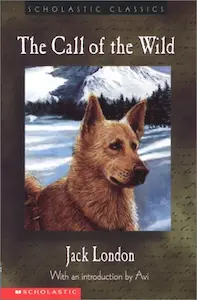The Call of the Wild - Summary
Jack London

Introduction
“The Call of the Wild” by Jack London is a captivating novel that takes readers on an unforgettable journey through the harsh and unforgiving landscapes of the Klondike Gold Rush. Published in 1903, this timeless classic explores the primal instincts and innate desires of both humans and animals. Through the eyes of the protagonist, Buck, a domesticated dog turned sled dog, London delves into themes of survival, adaptability, and the call of one’s true nature. This book summary will provide an overview of the plot, key characters, and significant themes that make “The Call of the Wild” a must-read for all literature enthusiasts.
The Journey Begins: Buck’s Transformation
The story begins in Santa Clara Valley, California, where Buck, a St. Bernard and Scotch Collie mix, lives a comfortable life as a domesticated pet. However, his life takes an unexpected turn when he is stolen and sold into the brutal world of dog sleds in the Yukon. Buck’s journey from a pampered house pet to a fierce and resilient sled dog forms the central narrative of the novel.
London masterfully portrays Buck’s transformation, emphasizing his gradual reversion to his ancestral instincts. As Buck faces the harsh realities of the wilderness, he taps into his primal nature, shedding his domesticated demeanor and embracing his inner wildness. Through vivid descriptions and powerful imagery, London highlights Buck’s physical and psychological evolution, making the readers feel as if they are experiencing the transformation alongside him.
The Law of Club and Fang: Survival of the Fittest
One of the prominent themes in “The Call of the Wild” is the concept of survival of the fittest. London vividly depicts the brutal nature of life in the wild, where only the strongest and most adaptable creatures can endure. Buck learns this firsthand as he witnesses the harsh treatment of sled dogs and faces the challenges posed by the hostile environment.
London’s use of vivid descriptions and intense action sequences immerses the readers in the dog-eat-dog world of the Klondike Gold Rush. He showcases the brutality of the law of club and fang, where physical strength and cunning are essential for survival. Buck’s encounters with other dogs, such as the vicious Spitz, and his battles with nature’s forces, including freezing temperatures and treacherous terrain, serve as examples of the harsh realities faced by both humans and animals during this era.
The Bond Between Man and Dog
While “The Call of the Wild” primarily focuses on Buck’s journey, the novel also explores the complex relationship between humans and dogs. London portrays various human characters, each with their own unique approach to handling and utilizing sled dogs. From the cruel and heartless to the compassionate and understanding, these characters provide insight into the diverse ways in which humans interact with animals.
One of the most significant human-animal relationships in the novel is between Buck and John Thornton, a kind-hearted prospector. Thornton recognizes Buck’s innate strength and loyalty, treating him with respect and affection. This bond serves as a stark contrast to the exploitative relationships Buck experiences earlier in the story. Through Buck’s unwavering devotion to Thornton, London highlights the profound connection that can exist between humans and animals, emphasizing the importance of mutual respect and understanding.
Nature’s Majesty and Indifference
London’s vivid descriptions of the Alaskan wilderness not only serve as a backdrop for the story but also symbolize the power and indifference of nature. The vast landscapes, frozen rivers, and towering mountains evoke a sense of awe and magnificence, while also highlighting the insignificance of human existence in the face of such grandeur.
Throughout the novel, London repeatedly emphasizes the idea that nature is indifferent to the struggles and triumphs of individuals. Buck’s encounters with natural forces, such as avalanches and wild animals, demonstrate the relentless and unforgiving nature of the wild. This portrayal serves as a reminder of humanity’s place within the natural world and the need for humility and adaptability in order to survive.
Conclusion
“The Call of the Wild” is a timeless masterpiece that continues to captivate readers with its powerful storytelling and exploration of primal instincts. Jack London’s vivid descriptions, compelling characters, and thought-provoking themes make this novel a must-read for anyone seeking an adventure-filled journey into the heart of the wild. Through Buck’s transformation, readers are reminded of the importance of embracing one’s true nature and the indomitable spirit that resides within us all. London’s enduring work serves as a testament to the enduring power of literature to transport and inspire readers across generations.